Jaideep Saraswat and Nikhil Mall
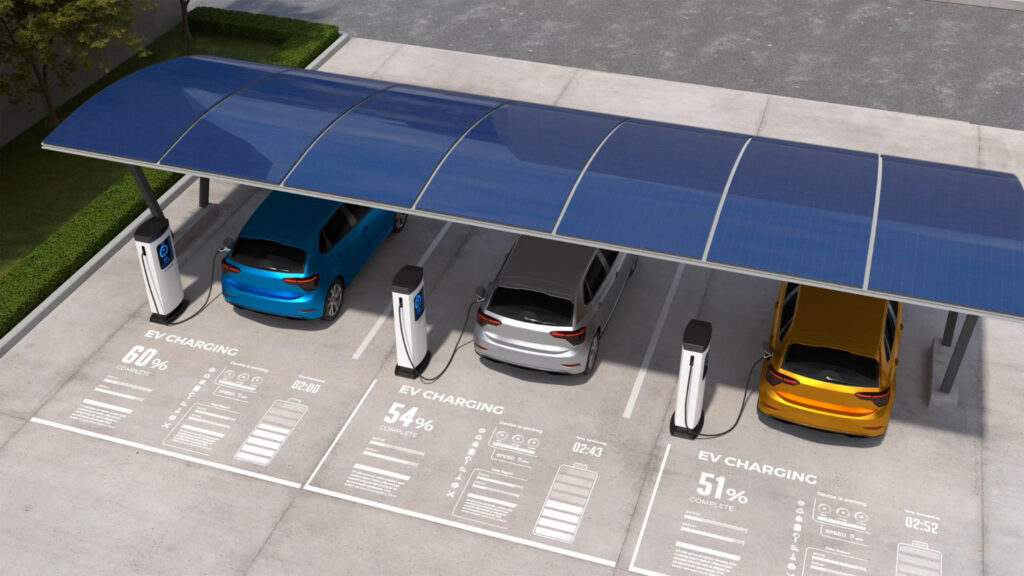
The widespread adoption of Electric Vehicles (EVs) hinges significantly on two critical factors: public awareness regarding EVs and their benefits, and the availability of a reliable and extensive charging network. These elements are pivotal in assuaging concerns related to range and charge anxiety, which often deter potential buyers from embracing EV technology. In this blog, our primary focus is on the latter pertinent to Indian context.
The charging infrastructure landscape in India has experienced significant expansion in recent years. Within just two years, from February 2022 to March 2024, the number of public charging stations surged from 1800[1] to 16,347[2]—an almost ninefold increase. This remarkable growth has corresponded with a substantial rise in EV adoption, with 2.65[3] million vehicles sold during this period, more than doubling the total number of EVs sold prior to February 2022.
Zooming in on a narrower time frame, the number of public charging stations surged from 10,261 in September 2023 to 16,347 by March 2024. Notably, the number of entities responsible for deploying these chargers increased from 52 to 81 during this period. Additionally, the quantity of DC chargers rose by 1.4 times, while AC chargers saw a 1.6-fold increase. As of March 2024, there are 11,384 AC chargers, with the remainder being DC chargers, as illustrated in Figure 1.

In a mere six-month span, Karnataka has surpassed Maharashtra to become the leading state in terms of the quantity of deployed charging infrastructure. Presently, Karnataka boasts a total of 5130 public charging stations, as depicted in Figure 2.
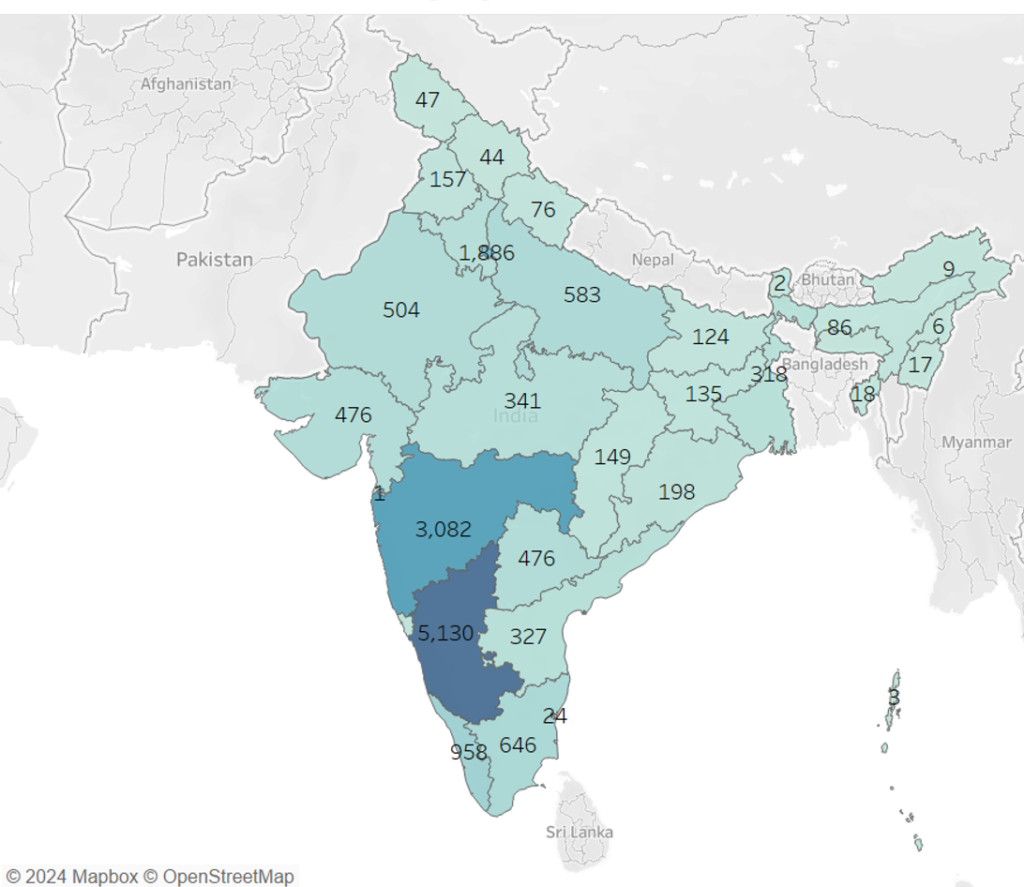
Figure 3 illustrates the spread of charging stations across India. Clusters observed near Bengaluru, Pune, and Mumbai indicate that while some states have a substantial number of chargers, they are concentrated primarily around major cities. Figure 4 further emphasizes this clustering phenomenon. This highlights that while the overall state-level figures appear significant and are on the rise, the distribution at a local level is uneven. There is a pressing need for greater efforts to ensure that new chargers are deployed in varied locations. This not only instills confidence in existing EV owners but also reassures prospective buyers considering the switch to EVs.
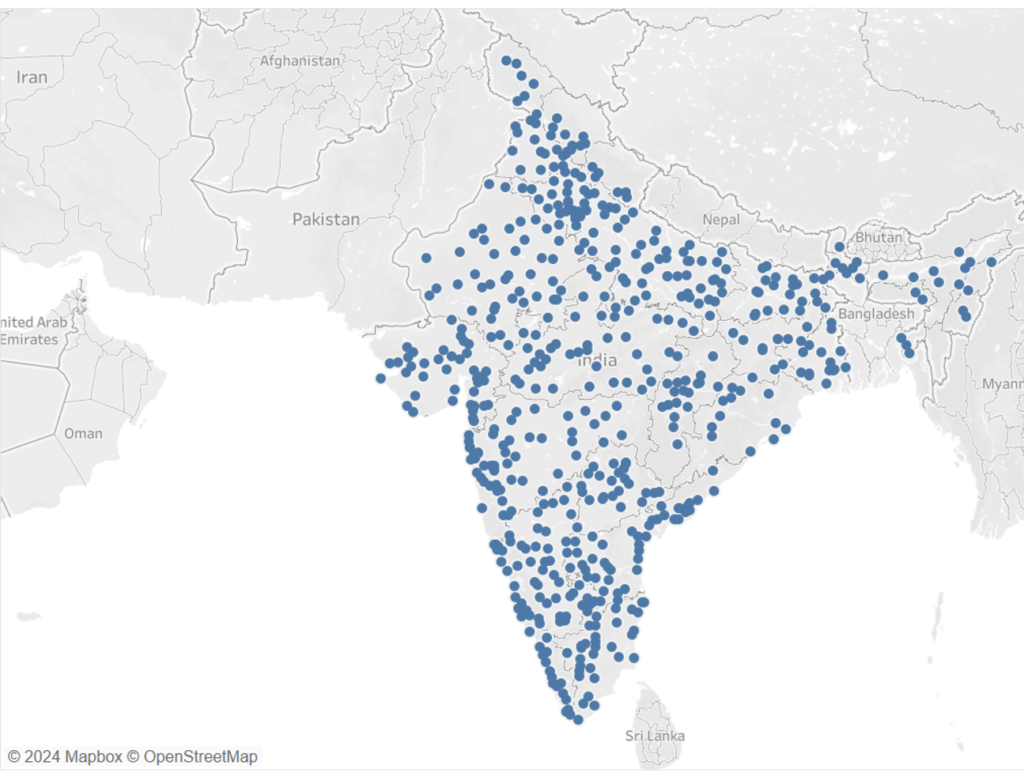
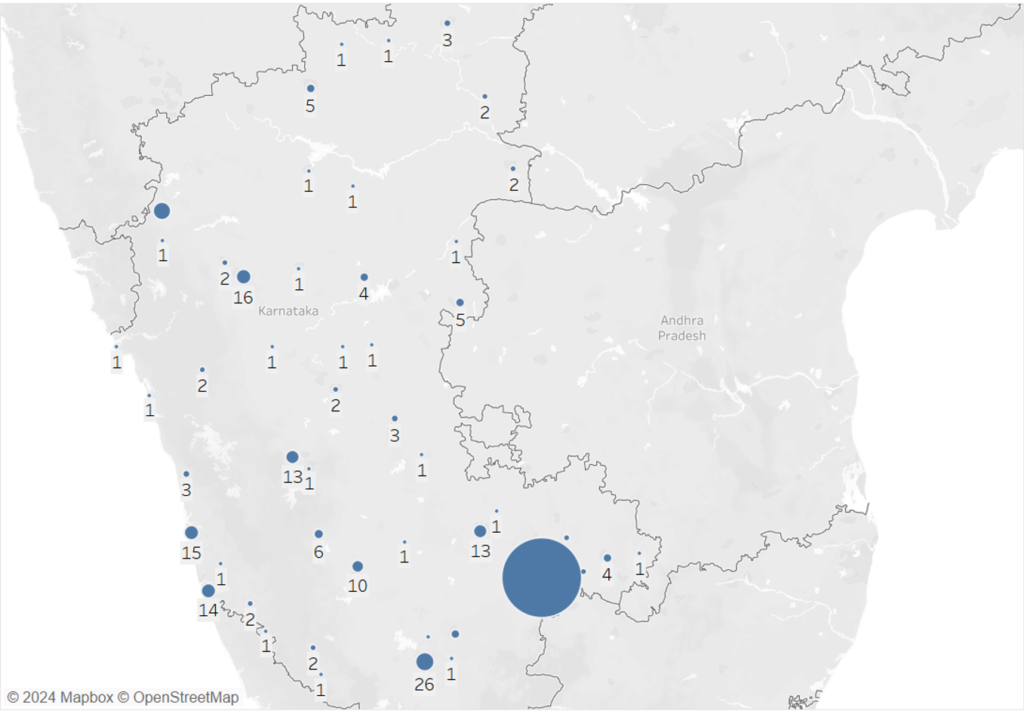
Upon closer examination of the other facets of these charging stations, it was unfurled that while Karnataka boasts the highest number of charging stations overall, Delhi has a greater number of stations supporting electric four-wheelers, followed by Maharashtra, as depicted in Figure 5. This disparity across segments suggests potential barriers to the uptake of certain EV segments in these regions.
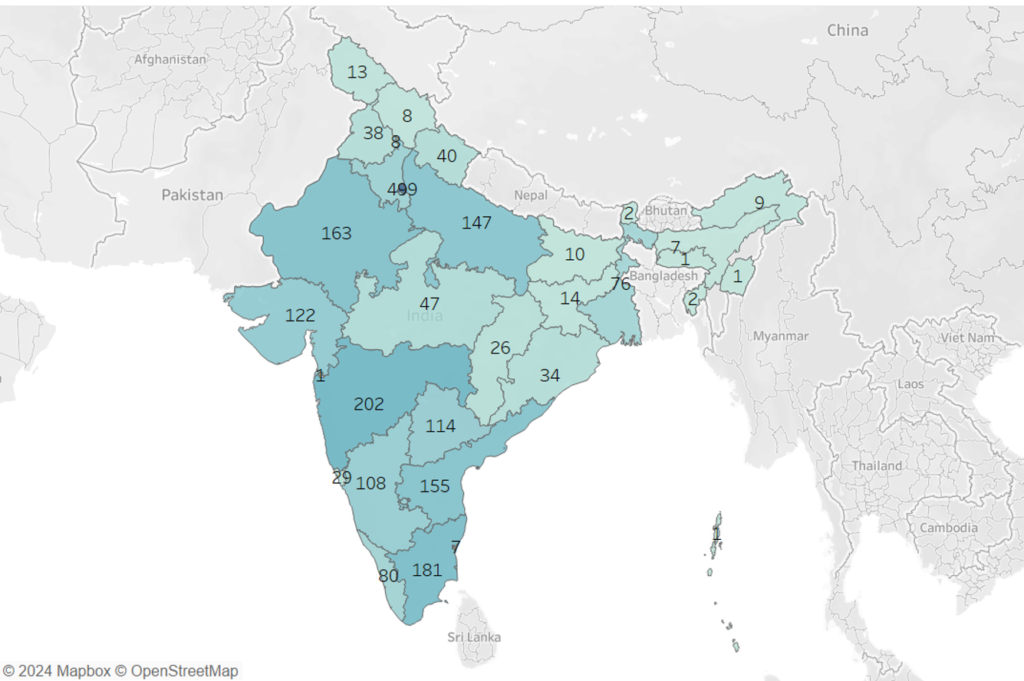
Moving on to CPOs, as previously stated, there are a total of 81 in operation. Figure 6 highlights the top 10 among them, each boasting over 200 active public charging stations. Notably, Ujoy Technologies emerges as the leader in terms of sheer numbers of deployed charging stations, closely followed by Indian Oil. It presents a wonderful example where both private and public players are coming together to make a difference in India’s charging infrastructure space. However, there remains room for improvement, particularly in the private sector’s engagement in the North-eastern region. Presently, there are approximately 140 public charging stations in that area, with around 115 of them being operated by public sector entities like Indian Oil and Bharat Petroleum.
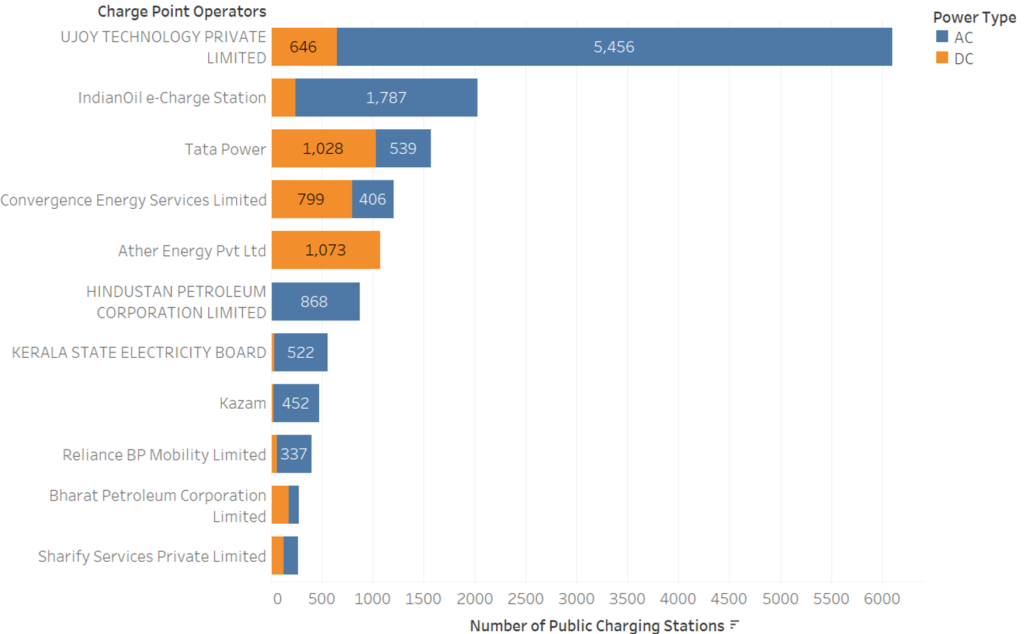
It is widely acknowledged that there are four essential aspects to consider for a charging station: discovery, availability, navigation, and transactions. As highlighted in the blog, the discovery of charging stations has significantly improved, with many GPS systems now incorporating this information. Additionally, numerous stations have shared their data with the Bureau of Energy Efficiency (BEE) for display on the EVyatra platform. However, several CPOs have yet to share their data on this platform, an area poised for improvement.
Going forward, the priority should also shift towards bolstering availability, navigation, and transaction processes, ensuring a seamless experience for EV owners. This entails providing advance information to EV owners about the availability of charging stations and enabling pre-booking of slots. Additionally, navigation procedures for initiating charging should be streamlined and efficient. Furthermore, simplifying the transaction process for paying for the charge is crucial; it should be as straightforward as paying for any other service or commodity in India. By prioritizing user satisfaction, we not only bolster confidence among EV users but also cultivate numerous benefits for the broader EV ecosystem.
Let us celebrate the strides made in the EV charging sector, while we remain steadfast in our focus on addressing other critical aspects.
[1] https://www.researchgate.net/publication/359315105_Using_Multi-Server_Single_Line_Queuing_Analysis_to_Design_Electric_Vehicle_Charging_Bays_Optimally?_tp=eyJjb250ZXh0Ijp7ImZpcnN0UGFnZSI6ImhvbWUiLCJwYWdlIjoicHJvZmlsZSIsInByZXZpb3VzUGFnZSI6ImhvbWUiLCJwb3NpdGlvbiI6InBhZ2VDb250ZW50In19
[2] https://evyatra.beeindia.gov.in/
[3] https://iced.niti.gov.in/analytics/ice-and-ev-vehicle-registered




